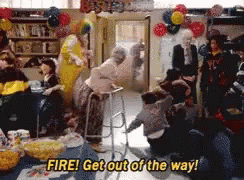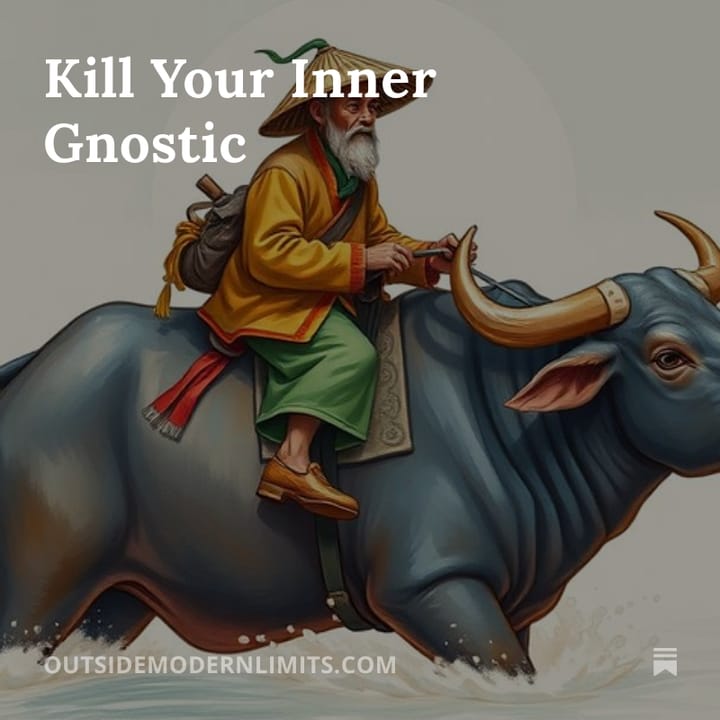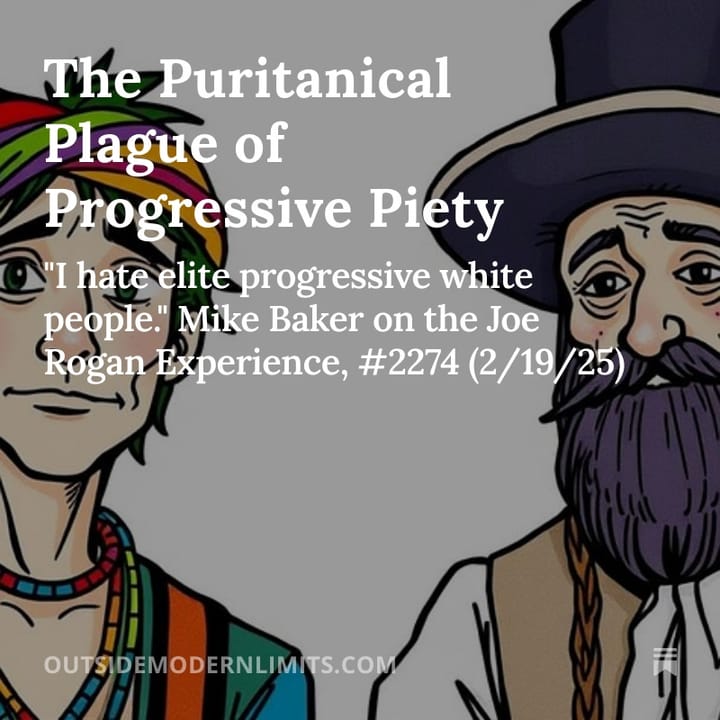From Renaissance "Follow the Magic" to Modernity "Follow the Science"
The Renaissance Believed in Magic Like Moderns Believe in Science

In 1598, a huge renegade friar organized a revolt to liberate Calabria from Spain.
Tommaso Campanella started the revolt with astrology: he announced to his followers that the stars portended great changes and revolution. He then added numerology, noting that the numbers agreed with the stars: the year 1600 was approaching and 16 is numerologically significant.[i]
The new century, Campanella preached, would mark the dawn of a new age—an age with a better religious cult, better moral laws, and an excellent ruler (to wit, Campanella, who thought he was astrologically destined to bring the world into the new age).
In order to prepare for the new age, Campanella taught it was first necessary to overthrow Spanish rule, but he believed so strongly in his personal magical powers and the magical signs that he scarcely prepared for Spain’s inevitable response. His “revolution” was quickly crushed and Campanella was imprisoned for 27 years.
During his imprisonment, he channeled his Utopian-magical desires into writing. In Citta del Sole (The City of the Sun), he drafted a blueprint for his ideal city, a mountain city ruled by a priest named Hoh. Hoh and his bureaucratic aides would rule over sex relations, which would be organized to bring about the best humans. There would be no mental or physical disabilities. All things would be held in common, including the women, and children would be raised by the community. Both sexes would be trained to fight. Everyone would work, but only four hours per day. Everyone would practice perfect virtue, and there would be no crime.[ii]
The City's structure would be dictated by astrology. It would be divided into seven divisions named after the seven planets (Neptune and Pluto hadn’t been discovered yet). The walls which divided each division would be covered with astrological depictions. In the middle of the City, there would be a vast temple with an altar containing a great "mappamondo" on which all the heavens would be depicted. The dome would contain the greatest stars with a listing of the powers each has over the earth. In short, Campanella's City was "a complete reflection of the world as governed by the laws of natural magic in dependence on the stars” and was "saturated through and through with astrology."[iii]
The Magical Renaissance
We associate the Renaissance with the philosophy of humanism and an awakening from the slumber of the Dark Ages, but that’s a fuzzy idea, at best. It’s true that the Renaissance’s philosophy was humanism, which was a departure from the emphases of the Middle Ages’ way of thinking and put western civilization on the road to modernity, but the Renaissance was hardly modern.
In fact, magic was the Renaissance’s cutting edge. Renaissance magicians like Cornelius Agrippa (1486-1535) and Giordano Bruno (1548-1600) earned their money by teaching esoteric and magical doctrines, especially to royalty and society’s upper crust. The pioneer of modern astronomy, Johannes Kepler (1571-1630), couldn’t sustain himself by working as an astronomer, so he frequently fell back on working as a court astrologer. The physician and priest Marsilio Ficino (1433-1499) went to great lengths to justify the use of magic. He taught the craft of making and using talismans, asserting that they gave the user a deeper understanding of spiritual workings within the mundane.
The great Renaissance writer, Pico della Mirandola (1463-1494), liked all sorts of magic: astrology; the occult; esoteric literature such as the Orphic hymns, Chaldean oracles, and Jewish cabala, and the writings of Hermes Trismegistus. Mirandola’s great work, Oration on the Dignity of Man(1486), helped shape the Renaissance and, in turn, the modern world (one scholar recently referenced it as the “quintessential humanist manifesto”[iv]), but Frances Yates, probably the foremost expert on magic during the late Middle Ages, described it as the “great charter of Renaissance magic.”[v]
Dating the Renaissance
So, when exactly was the Renaissance?
Like any era, no one agrees. I believe it’s best referenced, chronologically, as an era that ran concurrently with the late Middle Ages, so:
Early Middle Ages: 600-1000 (collapse of the socio-economic structures of the western Roman Empire to Christianization of almost all of Europe)
High Middle Ages: 1000-1300 (era of the most-powerful Popes and Scholasticism (Aquinas: 1225-1274)
Late Middle Ages: 1300-1650 (the Avignon Captivity, Black Plague, Thirty Years’ War).
If you want a precise date for when the Renaissance started, try April 6, 1327. That’s the day when Petrarch (1304-1374) left Easter Mass and saw Laura. He fell in love with her. No one knows who she was, but the most likely candidate is Laura de Sade, the wife of an ancestor of the Marquis de Sade, who was married at age 15 and would’ve already birthed several children when Petrarch first saw her.
Petrarch’s love wasn’t returned, but it burned in him for the rest of his life, even after the Plague killed Laura years later. He channeled his passion into classical learning, especially Cicero, collecting classical manuscripts, and writing. He became a household name. The Renaissance was born: people were reading works from antiquity and patronizing art in the classical tradition, including the first nude statue in over 1,000 years (Donatello’s David).
There was a sense that humans could do something
Humanism was the philosophy of the Renaissance.
Humanism marked a shift in thinking. Humanism was a sense that humans could do something, not just pray and wait for judgment day. The model: the ancient Greeks and Romans who did a ton of things, all without the help of Christianity. The Renaissance was still thoroughly Catholic, but it was a Catholicism spiked with a dose of self-confidence. Instead of asking “What would Jesus do?” the Renaissance thinkers increasingly asked, “What would Cicero or Plato do?”
In order to know what Cicero or Plato or their ancient cohorts would do, scholars needed their words. This sparked a frenzy for manuscripts. Scholars searched high and low for ancient works; rich merchants paid scribes to transcribe them.
So, that was the Renaissance: classical art and literature combined with a new sense of self-confidence.
Rather, that was the Renaissance for its first 100 years.
As the Renaissance moved forward, it also moved backward
Throughout the early and high Middle Ages, monastic scribes translated and transcribed ancient texts. It was arduous: tedious and challenging at the same time. Many ancient works went through successive versions. Over the centuries, an increasing number of mistakes crept into the manuscripts and Renaissance scholars were discovering them.
This created an intense interest in getting back to the original sources. A general sense emerged that “older = purer,” maybe even “older = holier,” which led to the idea that older writers were better (purer, holier, nearer to divine truth) than newer writers. So, Cicero (106 BC-43 BC) was great, but Plato (428 BC-348 BC) was even better. If there were writers earlier than Plato, they might just be the holy grail of knowledge.
Then, in 1460, a monk employed by one of the greatest patrons of Renaissance art and literature, Cosimo de Medici, came back to Florence with the Corpus Hermeticum, the works of the ancient Egyptian, Hermes Trismegistus, who knew the secrets of the universe and who (according to legend) created the art of writing. Cosimo was excited, to say the least. Everyone knew about this ancient writer, but no one had seen many of his writings. And then this monk showed up with fourteen volumes.
Cosimo ordered Marsilio Ficino to stop working on translations of the works of Plato and, instead, fast-track Hermes’ volumes.
Yup, that’s right: Hermes Trismegistus knocked Plato to the side like George Costanza knocking aside that old woman in a walker when he thought the apartment was on fire.

Ficino finished the translations in only a few months. He also gave a scholarly account for readers that explained that Hermes Trismegistus was first in the genealogy of wisdom, which went, according to Ficino, something like this:
Hermes Trismegistus, Zoroaster, Orpheus, Algaophemus, Pythagoras, Plato
Europe now had in its hands the original font of knowledge, and that font was filled with magical water: astrology, the occult sciences, the secret virtues of plants and stones, the art of making talismans for drawing down the powers of the stars, and so on.
Europe was aflame with possibilities opened up by the writings of Hermes Trismegistus.
The sense that humans could do something was now fueled by a belief that they could use magic to do it. Or, rather, great magicians could use magic to do great things, whether it was to turn iron into gold or to establish utopian communities of the sort envisioned by Tommaso Campanella.
Magic, people believe, was the great tool that would usher in great progress.
Isaac Casaubon Killed the Renaissance Magus
And then along came Isaac Casaubon, perhaps the most brilliant and era-shifting man you’ve never heard of. In 1614, he killed the ancient Hermes Trismegistus by showing those fourteen volumes were written relatively late, around the year 200 AD.
By Renaissance standards, this made Hermes Trismegistus less than impressive, to say the least. He didn’t come shortly after Moses. He didn’t even come before Christ or the early Church fathers.
Europe’s reverence for magic came crashing down. Frances Yates said Casaubon’s discovery “is a watershed separating the Renaissance world from the modern world”:
It shattered at one blow the build-up of Renaissance Neoplatonism with its basis in the prisci theology of whom Hermes Trismegistus was the chief. It shattered the whole position of the Renaissance Magus and Renaissance magic . . . It shattered even the non-magic Christian Hermetic movement of the sixteenth century. . . . It shattered, too, the basis of all attempts to build a natural theology on Hermetism, such as that to which Campanella had pinned his hopes. Yates, 398
Casaubon, in short, shattered Renaissance magic.
But Casaubon didn’t shatter Renaissance humanism and its belief that humans could do things and the corollary love of the notion of progress.
Europe merely needed to change the tool. Instead of using magic, it would need something else.
It turned to science.
[i]. Frances Yates, Giordano Bruno and The Hermetic Tradition (University of Chicago, 1991), 364.
[ii]. Will Durant, The Age of Reason Begins(Simon and Schuster, 1961), 625-626.
[iii]. Yates, 367-369.
[iv] Jennifer McNabb, Renaissance: The Transformation of the West (The Great Courses, 2018).
[v] Yates, 86.



